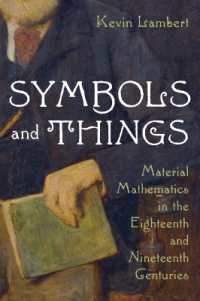Description
This book encourages cross-disciplinary dialogues toward introducing a new framework for neuro-narratology, expanding on established theory within cognitive narratology to more fully encompass the different faculties involved in the reading process.
To investigate narrative cognition, the book traces the ways in which cognitive patterns of embodiment – and the neural connections that comprise them – in the reading process are translated into patterns in narrative fiction. Drawing theories of episodic memories and nonvisual perception of space, Farmasi draws on theories of episodic memories and nonvisual perception of space in analyzing a range of narratives from twentieth century prose. The first set of analyses shines a light on perception and emotion in narrative discourses and the construction of storyworlds, while the second foregrounds the reader’s experience. The volume makes the case for the fact that narratives need to be understood as dynamic elements of the interaction between mind, body, and environment, generating new insights and inspiring further research.
This book will appeal to scholars interested in narrative theory, literary studies, cognitive science, neuroscience, and philosophy.
Table of Contents
Table of Contents
Part I.
Introduction 1
Chapter 1. Neuro-narratology
Chapter 2. Spatial perception, negative emotions, and narratives
Part II.
Chapter 3. "Sense perceptions and representation of consciousness in Vladimir Nabokov’s Invitation to a Beheading and Poe’s ‘The Pit and the Pendulum’"
Chapter 4: "Storytelling with Tourette’s Syndrome in Jonathan Lethem’s Motherless Brooklyn"
Chapter 5. "Narrative Space and Motion(lessness) in ‘The Ivory Acrobat’"
Part III.
Chapter 6. "Narrative experience as kinetosis for the reader: Spatial perception in The Body Artist"
Chapter 7. "Disorientation, dislocation, and disnarration in Mark Z. Danielewski’s House of Leaves."
Chapter 8. Representation of Dissociation and Negative Emotions in Haruki Murakami’s "Sleep"
Conclusion
Reference List
Index
-

- 電子書籍
- 【分冊版】魔獣密猟取締官になったんだけ…
-

- 電子書籍
- 【新装版】神撃のバハムート TWIN …
-

- 電子書籍
- クロウ・レコード Infinite D…
-

- 電子書籍
- 僕らのAI論 9名の識者が語る人工知能…




